What's in your pencil?
Ever wondered what is really in the 'lead' of an HB pencil... and before you say lead (Pb), read on...
Ok, so most people know that it actually is largely graphite, a form of carbon, but is there anything else in there? As part of our NOVA experiments, we were required to accurately characterise the 'carbon rods' used to ignite the plasma in the reactor, this is the metrics that came from that work.
How heavy is a pencil lead
To make things simple, we are just going to look at 10 pencil leads, the kind used in those re-fillable 'pop-a-point' pencils, you know, the ones that you lazy people use since there is no requirement for sharpening them (or even finding out where you left your sharpener).
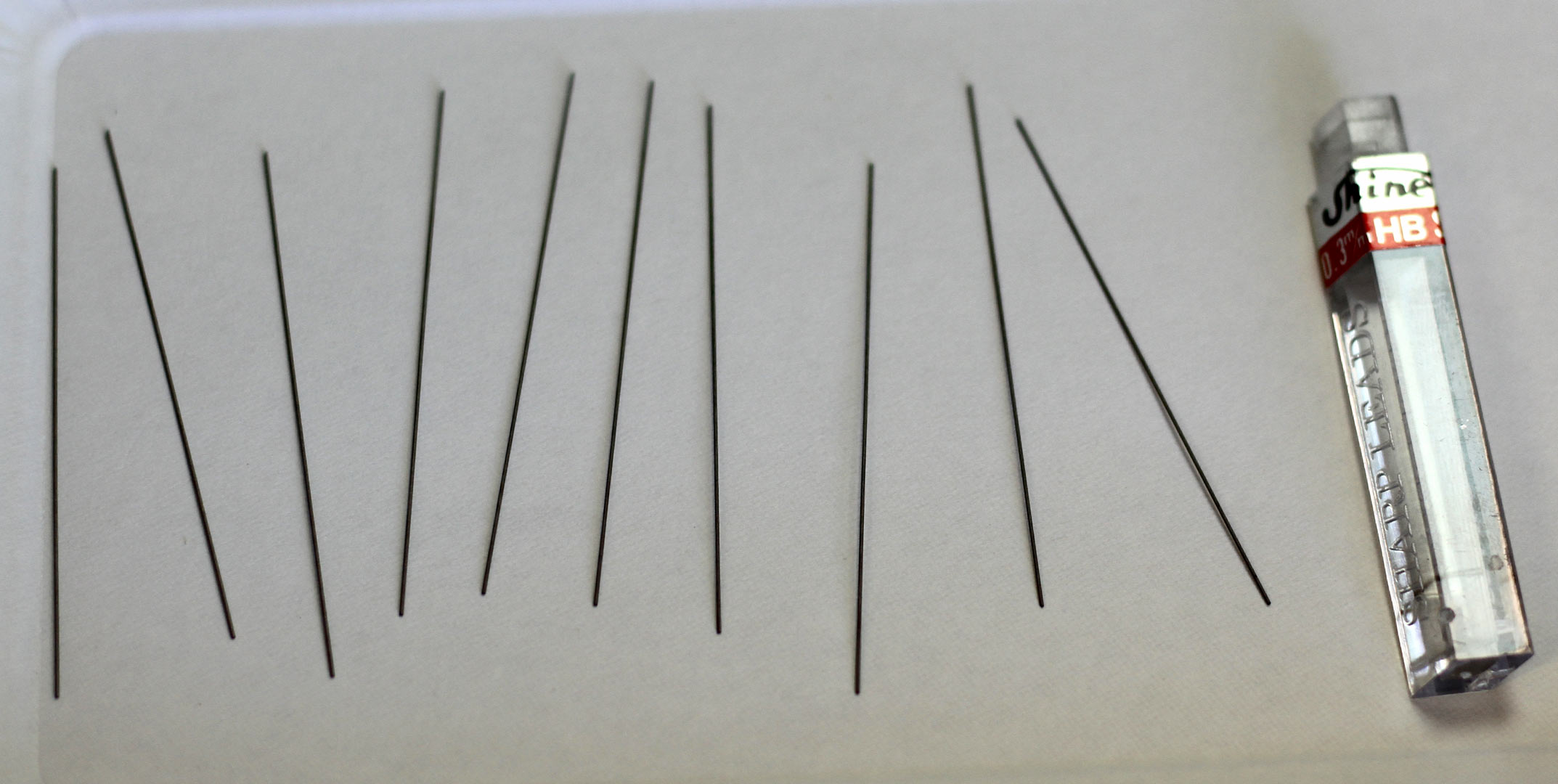
These little rods were 'Shine' brand, before placing them onto a little 30g jewellers scale purchased off e-bay, we tested the claimed accuracy of the scales that were rated at 0.001g with a 20g calibration weight.

(19.997+20.002+20.001+20.002+20.003)/5=20.001
Having confirmed the accuracy of the scales - we set about testing how much 10 leads weigh.
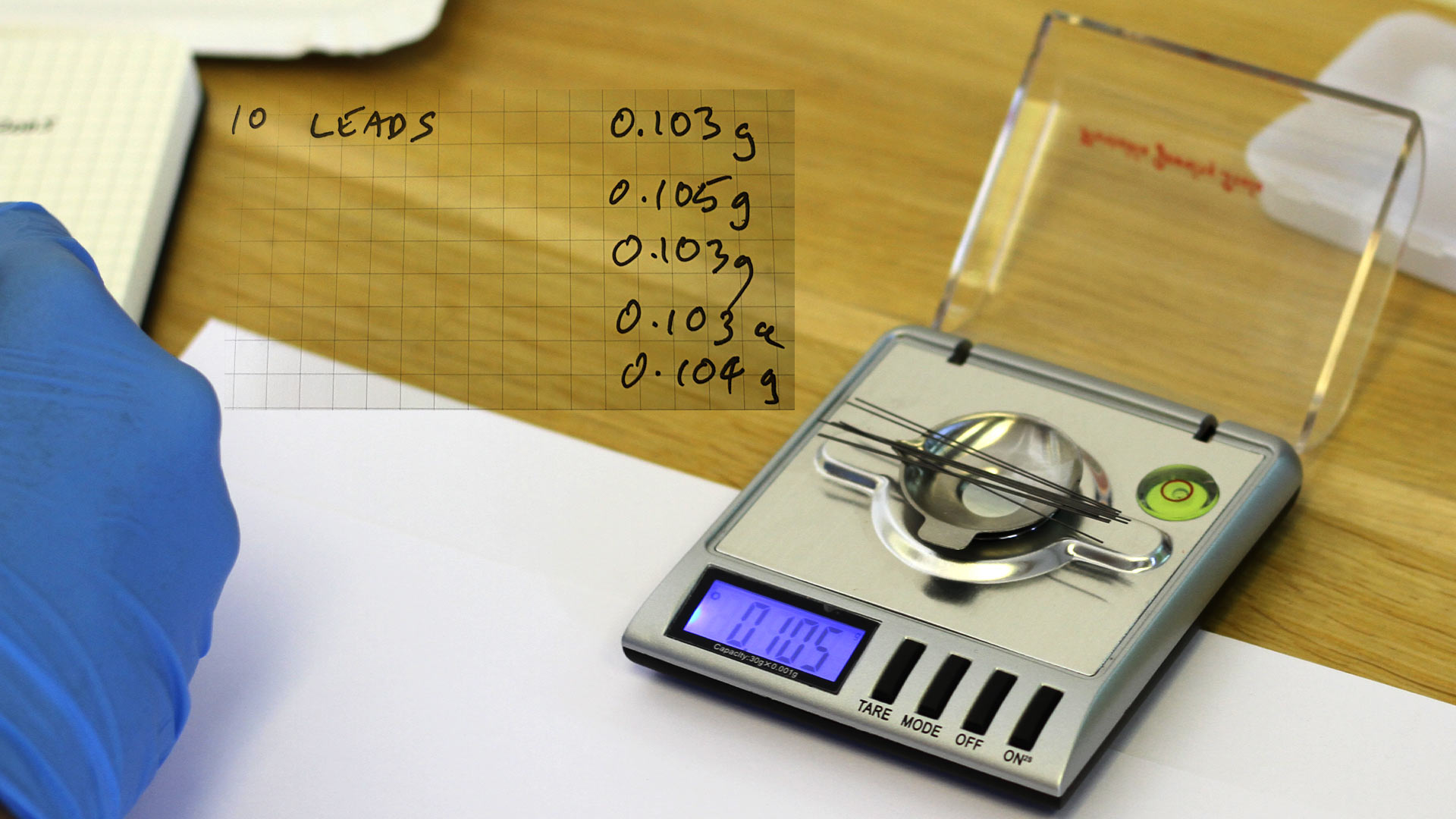
((0.103+0.105+0.103+0.103+0.104)/5)/10=0.01036
Weight of 1 lead is approximately 0.01g
What is the length of these leads?

Using a simple calliper (that was itself part of a pen), the length was determined to be 59.5mm
What was the girth of the lead?
The packet for the pencil refills claimed that they were 0.3mm in diameter, here is a shot of the lead under the scanning electron microscope (SEM)
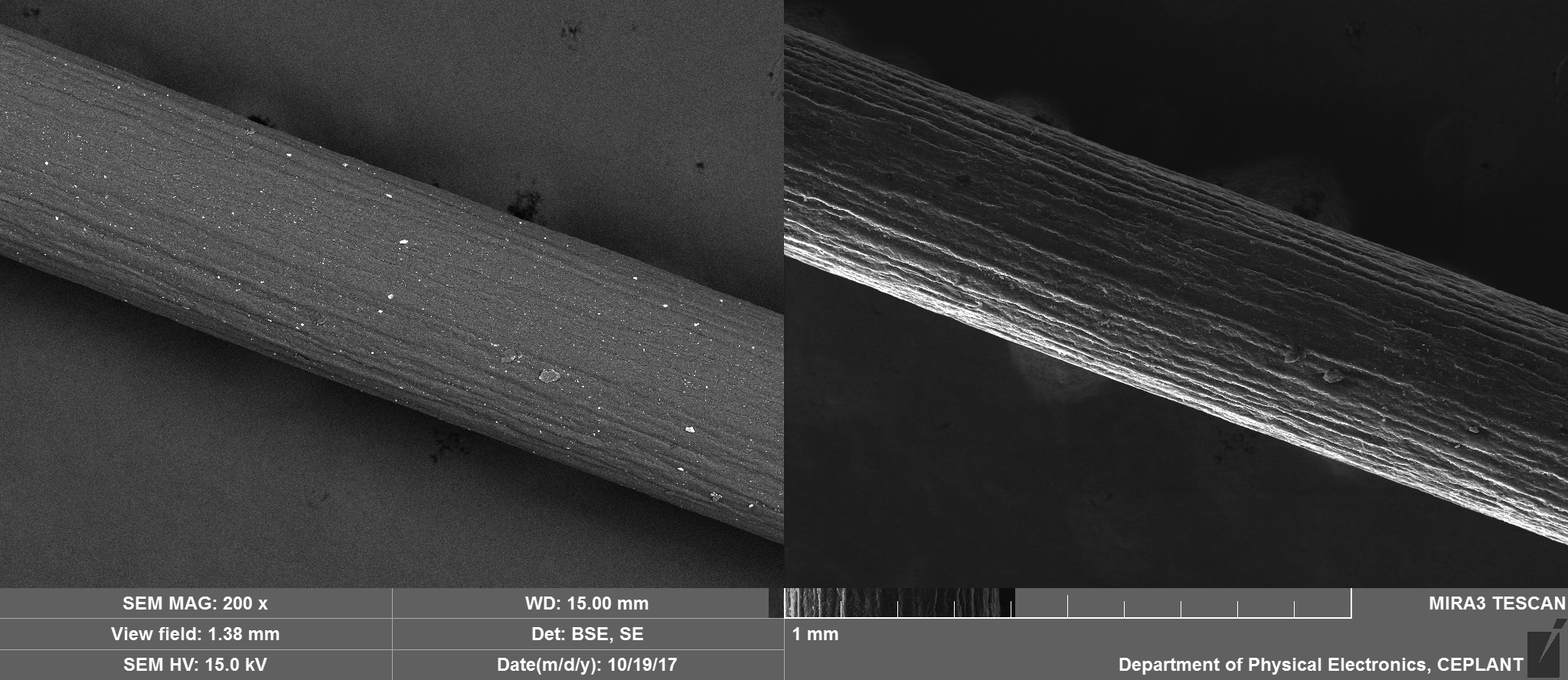
In this shot, it appears like the diameter is closer to 0.38mm, though perhaps this is due to the focal plane offset on the microscope. For clarity, a section of the lead has been overlaid onto the scale.
Structure
In the below image, you can see the broken end of the split rod.

The rod itself has linear striations that appear to indicate that the rod was somehow extruded in its production. The cross-section is far more interesting with what looks like a fibrous/slightly fluffy appearance. In both this picture and the previous one, you can see brighter spots on the back scatter electron (BSE) image. The bulk, as you will see is carbon or carbon oxides, however these brighter spots are actually heavier elements and the BSE image is a quick visual way for the SEM operator to see that there are different elements in play.
Elemental analysis
The cross section above was determined by 'map' technique to contain the following elements, all others shown in red are below the confidence threshold, so at at least on this analysis it cannot be considered detected.
C, O, Cl, Na, K
Using Spot analysis
Using the spot analysis technique on the cross section, one can get much a higher resolution look at particular selected areas of interest. This often reveals elements that are there, but in such small proportions as to be overlooked by the map technique.
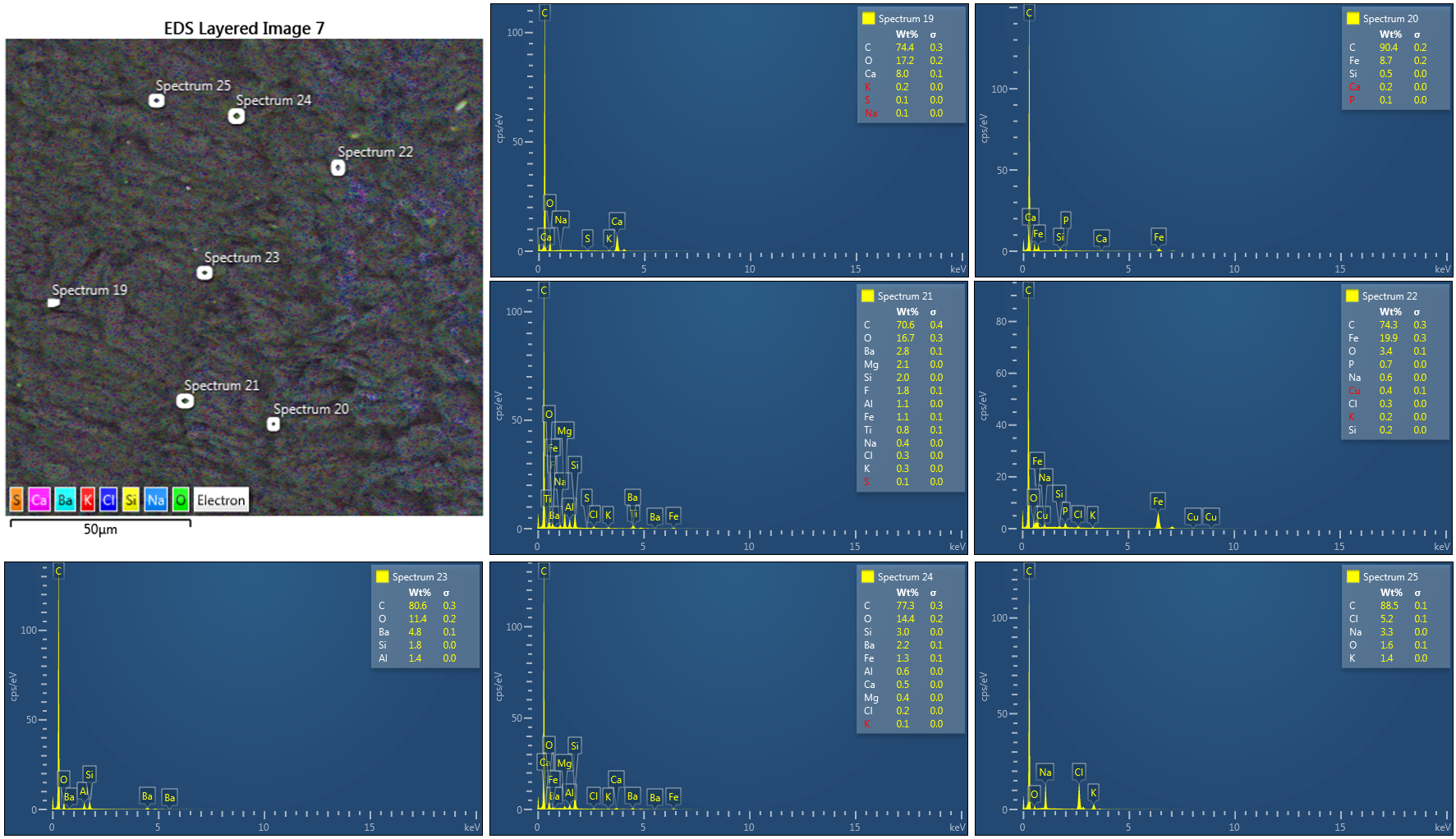
In addition to the elements observed in the 'map' technique, the spot analysis observed the following
Fe, P, Mg, F, Al, Ti, Ba, Ca, Si
Sulphur and Copper is only ever shown as being below confidence threshold, so at at least on this analysis they cannot be considered detected, however further scrutiny may reveal they are there.
The shaft also showed a similar spread of elements.

Spectrum 1 and 2 were nearly in the same position

Video of analysis
Conclusion
There is much more going on in the innocent pencil lead, whilst the vast bulk of the 0.01g of the lead is Carbon, there are minute specs of material containing O, Cl, Na, K, Ba, Ca, Si, Al, Mg, Fe, P, Ti and F.
One thing to note here is the surprise appearance of Barium, this is because barium salts are toxic and so, whilst your pencil 'lead' may not contain Pb - your teacher was probably still right to tell you not to chew your pencil!
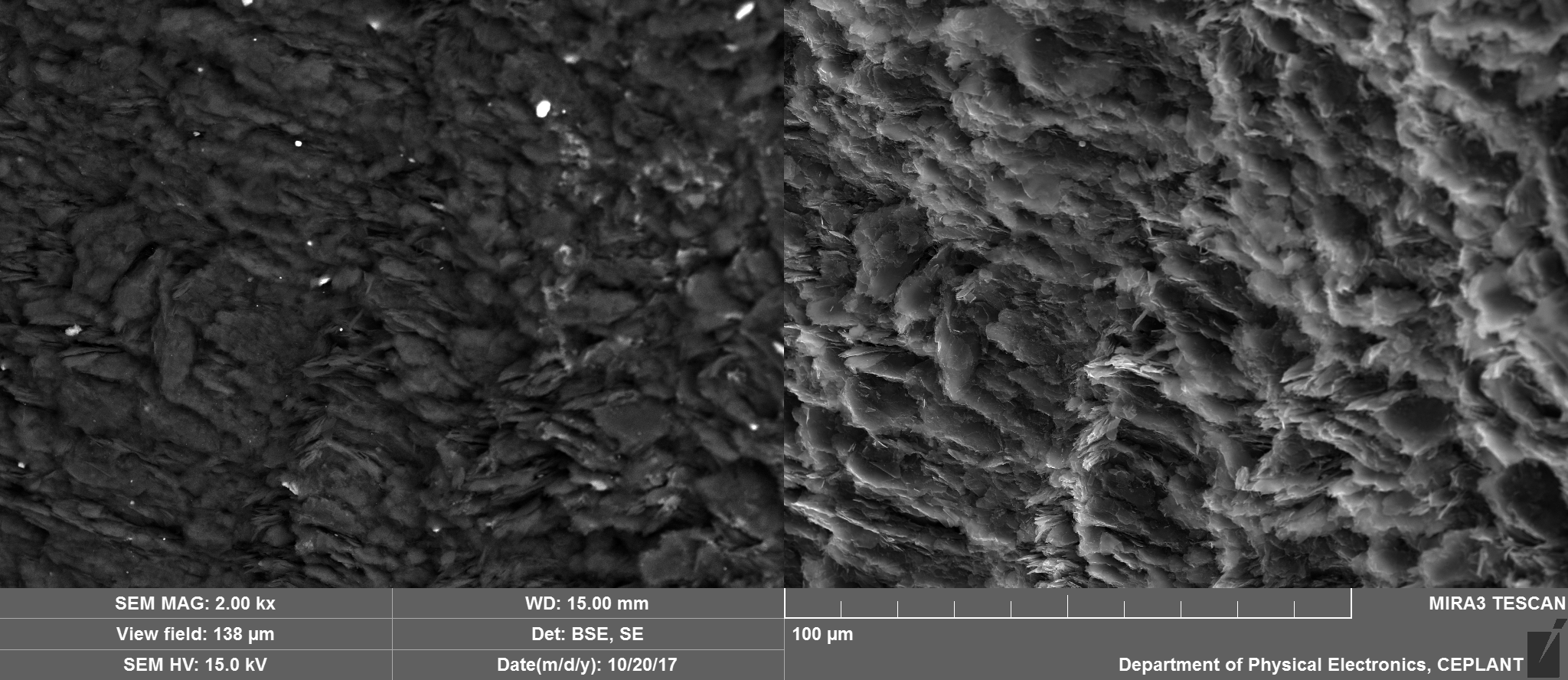

Here is another study of the elements in pencil leads
Thank you for your interesting research @mfmp. I have been using a lead pencil for more than 50yrs, and wasn't aware of the toxins we're exposed to.
Not just the Barium, but the Aluminium, not good to suck lets say.
Really nice gif of dolphins
Congratulations @mfmp, this post is the third most rewarded post (based on pending payouts) in the last 12 hours written by a User account holder (accounts that hold between 0.1 and 1.0 Mega Vests). The total number of posts by User account holders during this period was 1274 and the total pending payments to posts in this category was $1676.44. To see the full list of highest paid posts across all accounts categories, click here.
If you do not wish to receive these messages in future, please reply stop to this comment.
I used to disassemble my pencils when I was in in kindergarten, but this is a hole new level :))
It is fascinating what lies beneath. Next up for the close-up view is paper, plain white 'clean' paper.
Great post bro.go ahead.best of luck.
Thanks!